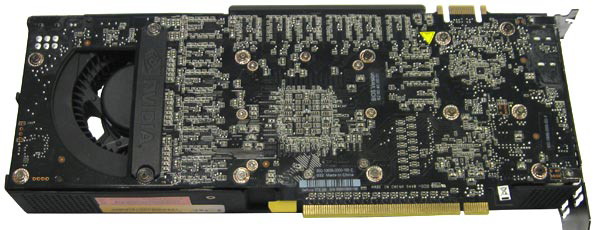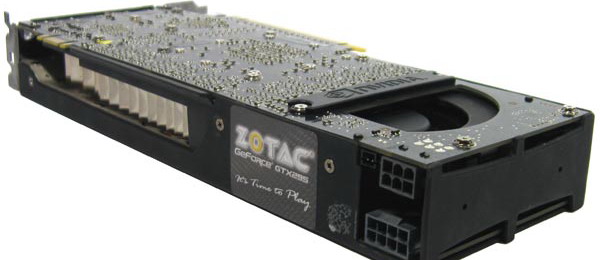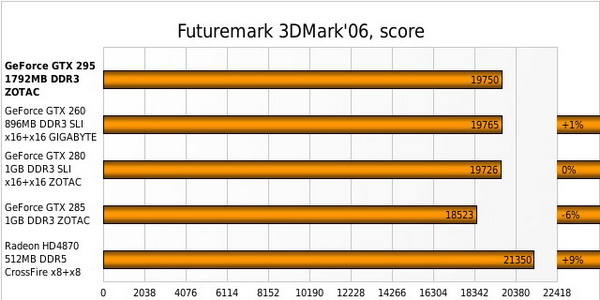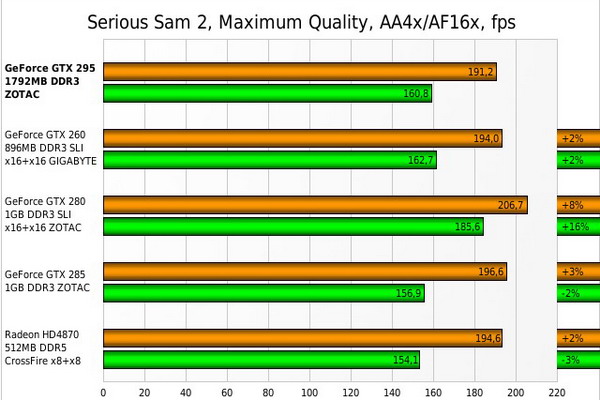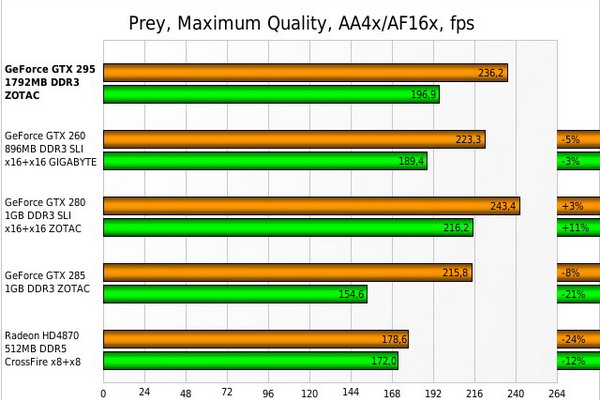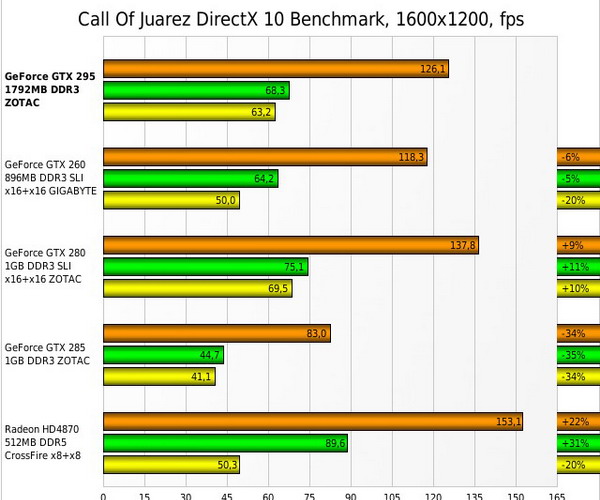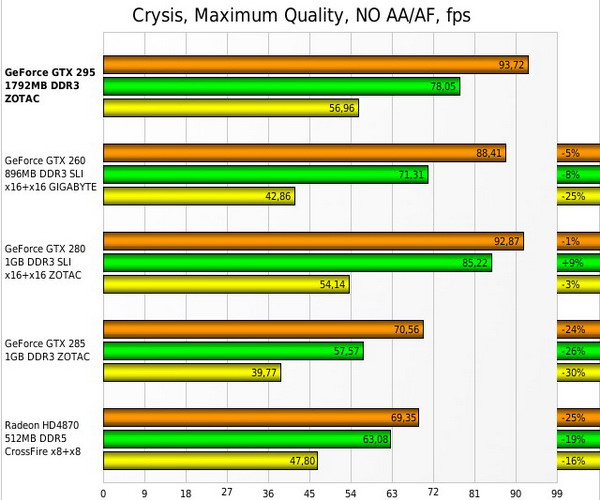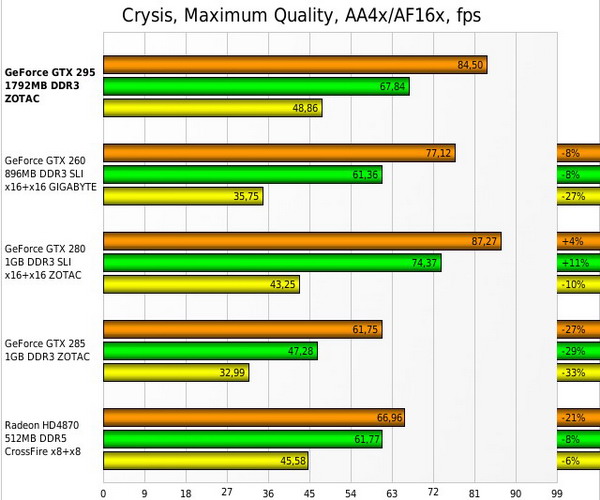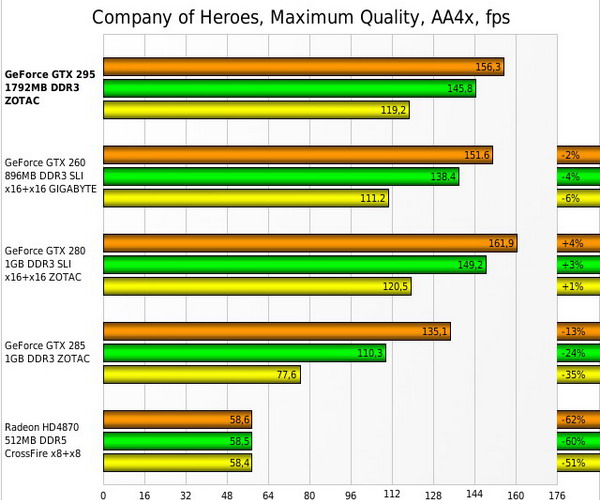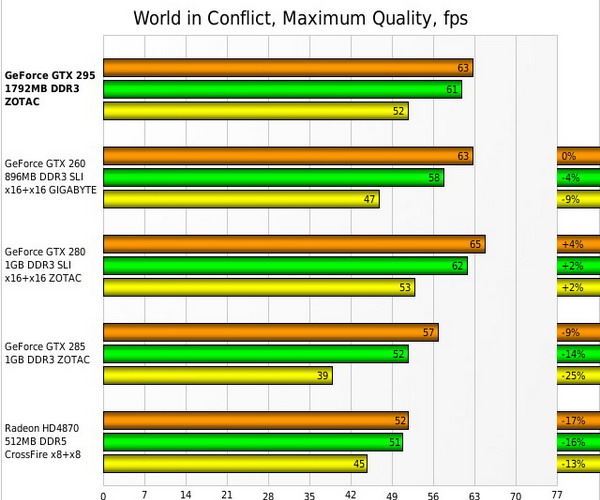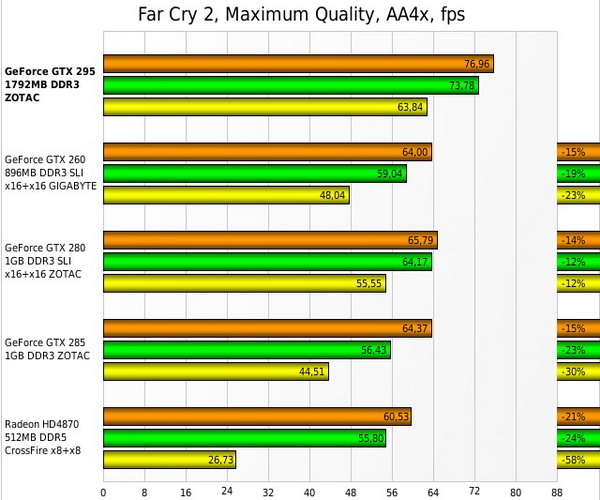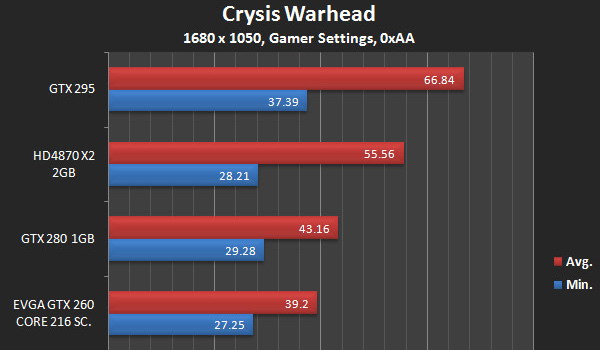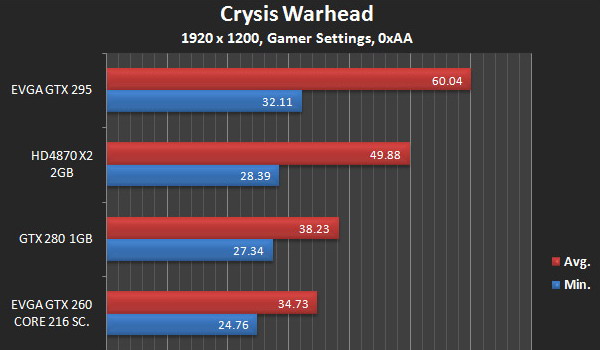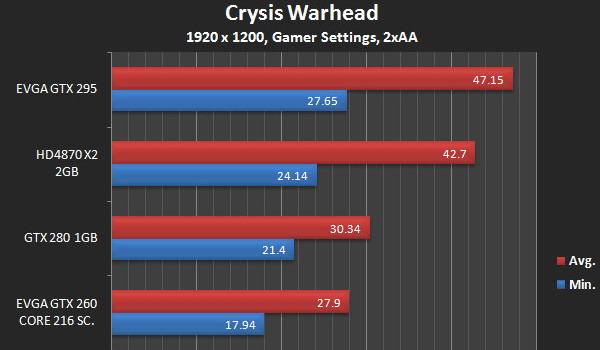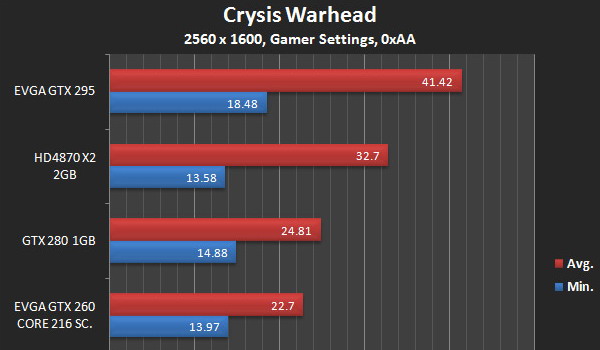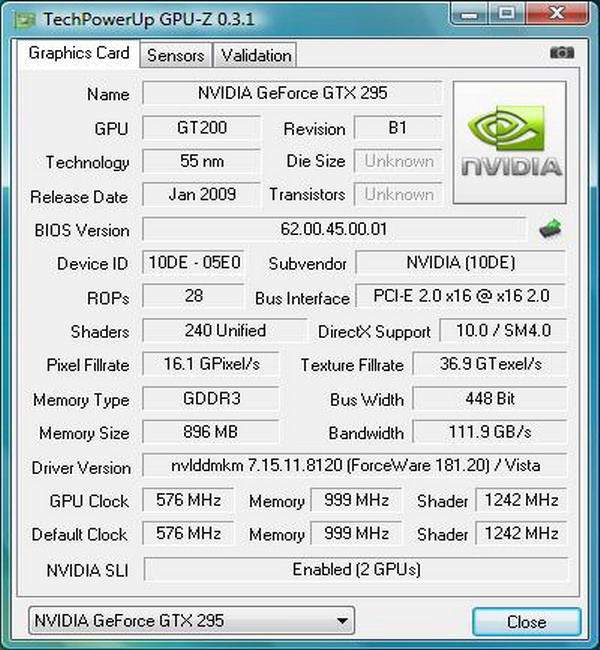
ZOTAC GeForce GTX 295 1792MB
Hardware 0 CommentsIntroduction
You would expect the most expensive gaming video card to also be the most powerful. Because you’re not retarded and this is very much the case. And while it’s an excellent pursuit, getting the best gaming hardware, this card surprised me.
ZOTAC made the card in question, a GTX 295. Although it’s not factory-overclocked or anything, it doesn’t have to be. This card just is unstoppable. I’m not even certain you’d get much from having a pair of them.
Of course, in a way, you are. The GTX 295 is, like ATI’s HD 4870 X2, two cards in one. It has two GPUs, connected by an onboard PCI-Express bridge, in SLI fashion. The GPUs are modified GTX 260s, architecturally identical, clocked at the same frequencies, although slightly-cut improved memory bandwidth (the GPUs of the 295 have 589-bit memory interfaces unlike the 260-216s with 448-bit interfaces).
So there are two questions I have about this card: is it worth the price hike over two GTX 260s, and who is this card tailored for?
The Card & Bundle
The design has changed a fair amount compared to the previous 9800 GX2. This card isn’t clad in heatspreaders, and the face shield is perforated. Much of the heatsink between the two halves is exposed, and the aperture for the intake fan is completely free from obstructions.
It has three video-out connectors, two DVI and one HDMI (no SD or component video options but I doubt anyone’s looking to stick this in an HTPC) and two power connectors, one six-pin and one eight-pin. It’s a lot leaner, both in style and mass. I did like the look of the GX2 but it’s nice to see that I’m not the only one who thought it was a bit overkill.
In addition to the warranty card and manual, this GTX 295 comes with a copy of the popular game GRID as well as a copy of 3DMark Vantage, and the driver CD. Accessories are two power adapters, an HDMI cable, an audio cable for said HDMI, and a VGA adapter.
Specifications and Setup
In this review, we’ll be comparing the ZOTAC GTX 295 AMP to:
- a VisionTek Radeon HD 4870 X2
- an EVGA GeForce GTX 260 896MB FTW
- a ZOTAC GeForce GTX 280 1GB Amp
- and a ZOTAC GTX 285 (review forthcoming)
Test Computer Specifications
- Intel Core 2 Duo E8400 3GHz
- Asus Rampage Formula (Sponsored by Asus)
- Crucial Ballistix Tracer DDR2 800 @ 4-4-4-12 (Sponsored by Crucial)
- Thermaltake Toughpower 1000 (Sponsored by Thermaltake)
- Windows Vista Ultimate x64 (Sponsored by Microsoft)
Video Card Specifications
Experience jaw-dropping realism and unparalleled performance at extreme high-definition resolutions with the ZOTAC GeForce GTX 295. The ZOTAC GeForce GTX 295 packs the raw power of two NVIDIA GeForce GTX 200 graphics processors on a single card for unmatched 3D processing power.
Graphics Plus technology enhances your gaming experience with the ZOTAC GeForce GTX 295. NVIDIA PhysX technology enables realistic gaming effects in PhysX-enabled games while Stereoscopic 3D technology surrounds you with in-game objects and effects for an absolutely immersive gaming experience with the ZOTAC GeForce GTX 295.
Chipset
- Chipset Manufacturer: NVIDIA(R)
- GPU: GeForce(R) GTX 295
- Core clock: 576MHz
- Stream Processors: 480
- Shader Clock: 1242 MHz
Memory
- Memory Clock: 1998MHz
- Memory Size: 1792MB
- Memory Interface: 589-bit
- Memory Type: GDDR3
3D API
- DirectX: DirectX 10
- OpenGL: OpenGL 2.1
Ports
- DVI: 2
- HDMI: 1
- TV-Out: No
- VGA: No
General
- Tuner: None
- RAMDAC: 400 MHz
- Max Resolution: 2560 x 1600
- RoHS Compliant: Yes
- SLI Supported: Yes(3-way)
- Cooler: With Fan
- Dual-Link DVI Supported: Yes
- Windows Vista: Certified for Windows Vista
Weight & Dimensions
- Weight: 2.7 lbs – 1,2 kg
- Dimensions: 4.376" X 10.5" 111.15mm X 266.70mm
- Packaging
- Driver Disk
- User Manual
- 2 x DVI-to-VGA Adapter
- S/PDIF Audio cable
- Race Driver: Grid
DirectX 10 Titles
Performance Notes
Obviously something here is afoot. The card isn’t keeping up with the GTX 285, and the reason is simple: SLI requires additional CPU overhead and without those cycles, the performance drops; the GTX 285 is already a little bottlenecked by the test bench and this is in extremis of that.
DX9, OpenGL, and Synthetics
Performance Notes
Here, again, we see more evidence of this GPU being its own worst enemy, not exceeding the GTX 285 except in synthetics. This is no condemnation of the card, it’s that under these circumstances, there’s no benefit from the extra power and SLI is a slight burden.
Video, Power, and Overclocking
Like any true 200-series GTX, the video playback is a little bit oversaturated, but you can fix that in the control panel. The playback quality is otherwise perfect.
The amount of power required to drive this card isn’t surprising, at least to me. According to NVIDIA the card requires a minimum of a 680W power supply, which is absurd, but the card has no problems consuming well over 250W of power at peak.
At the full load, it’s the loudest thing in the office. It’s not a dreadful fan sound, at the very least. It’s that the card moves so much air that the blast across the heatsink makes a lot of sound. At idle, it drops to silent, which correlates with the relatively low idle power consumption.
I’m surprised at how much this card overclocked by. Fourteen percent across the board. Unfortunately, at these settings and resolutions, it’s not gonna make any difference. Of course, if you’re overclocking your GPU you’re probably overclocking everything else, which is mandatory with this amount of video power.
Conclusion
So from all these tests it’s very clear: this card isn’t mainstream in the least. Across the board it’s CPU limited and at these resolutions it doesn’t have room to stretch its legs.
That’s a strange place to be after all the CPU price wars. High-end gaming processors cost a fraction of what this video card does and even they’re not enough for it, unless you’re an overclocker.
There’s also the fact that this card is DX10 only, which in a while, is going to be another bottleneck; this card is excellent right now but is just shy of future-proof. That’s unfortunate since it absolutely has the power, just not the API support. Finally, it costs more than two GTX 260-216s, which while it has the bandwidth improvement, I doubt under even the most extreme circumstances you’d ever be able to spot the difference.
Just so I’m clear: this is the most powerful card on the market to-date. If you’re not running at 1920×1200 or greater, it’s too much card.
Even then, there will always be those for whom the best will never be enough. For you, I say this card’s the one to shoot for.



